The Ethereum Pectra upgrade was conducted on May 7 at 18:05, which is the first upgrade of the Ethereum mainnet since the Cancun upgrade in March last year. It includes two collaborative updates: Prague execution layer hard fork and Electra consensus layer upgrade, and plans to incorporate 11 Ethereum Improvement Proposals (EIPs). Several important EIPs in this upgrade include EIP-7251 (increasing the maximum effective balance of validators), EIP-7691 (Blob throughput improvement), EIP-7623 (increasing calldata fees), etc. This article analyzes and combs through the data layer.
Blob Upgrade: Entering the 'Super Execution Layer'
At the ETHAsia 2025 event, Vitalik stated that the Pectra upgrade will increase Blob capacity from 3 to 6. Currently, 3 Blobs are about 375kb, generating 375 kb of data every 12 seconds, which is approximately 20kb per second, corresponding to a TPS of about 250. If Blob capacity is increased to 6, TPS is expected to improve to 500. However, the expansion of Blob capacity largely depends on the Fusaka upgrade expected to be realized in the third or fourth quarter of this year. In an ideal scenario, the Fusaka upgrade could increase Blob capacity to 48; if DAS (Data Availability Sampling) is fully implemented, Blob capacity could reach up to 512, potentially increasing the TPS of Ethereum L2 to tens of thousands.
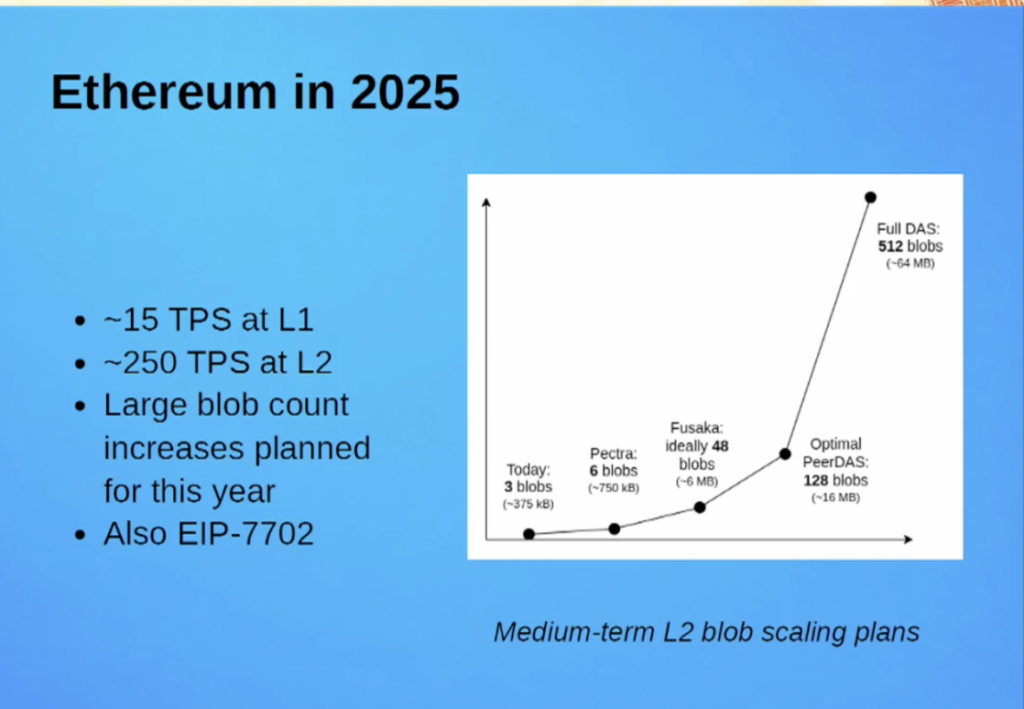
Looking at the on-chain data performance, since the Pectra upgrade, the level of Blob submissions has slightly fluctuated, rising to 3.6 shortly after the upgrade confirmation, but the overall level still has not reached half of the design level. However, Vitalik also mentioned in his speech that despite the rapid development of L2, improving L1's expansion kit remains crucial for achieving censorship resistance and cross-L2 asset transfers. In the future, as L2 takes on massive transaction processing, L1's Blob will inevitably be under pressure, and under the current market conditions, the continuous development of L2 is also potentially providing a feedback to L1.
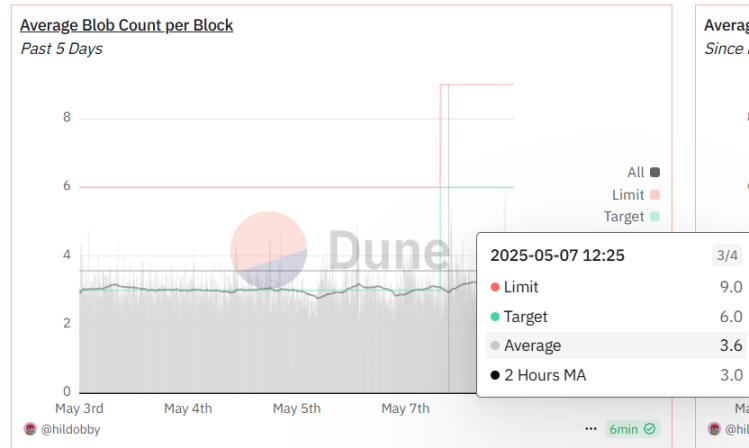
Validator Staking Upper Limit Increased: 'The Great Simplicity'
EIP-7251 increases the maximum effective validator balance from 32 ETH to 2048 ETH, allowing compound rewards and validator integration. On the Beaconchain data, the current validator balance distribution is concentrated in the 32-38 ETH range, with the highest balance reaching 70 ETH, far from the hard cap of 2048 ETH.
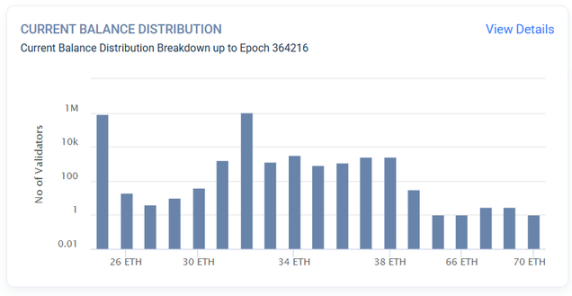
In Ethereum's liquid staking, Lido alone operates 286,000 validators, with an average validator allocation still at 32 ETH. After validator expansion, it is expected to reduce by 64 times to around 4,500. This means institutional validators will manage fewer nodes, reducing hardware and maintenance costs. However, some Ethereum critics warn that this measure may exacerbate centralization and reduce the network's risk resistance level.
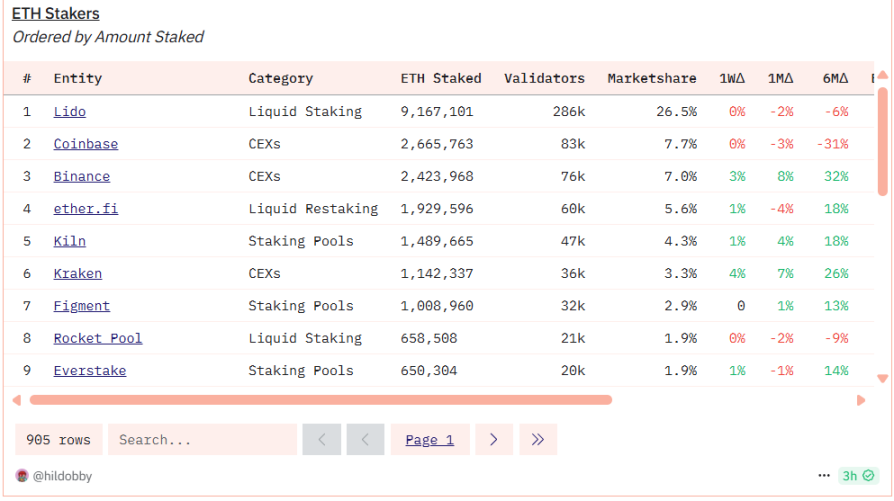
Additionally, EIP-7002 in the Pectra upgrade allows triggering validator exits and withdrawals on the mainnet, reducing dependence on active keys of validator operators, which as "hot" keys are easily vulnerable to attacks. In Pectra, EIP-7002 enables withdrawal credentials to initiate validator exits, bypassing the need for consensus layer active keys.
What is Ethereum's Way Out?
Under the major trend of L2 expansion, the income scale of Ethereum validators is also facing multi-dimensional shrinkage. On one hand, Blob expansion and low on-chain activity have reduced transaction fees, and on the other hand, price volatility has reduced staking yields in USD terms. Consequently, the daily income of Ethereum validators has dropped from $10 million to less than $5 million in the past year. The decrease in income may also impact the network's staking growth, and the implementation of EIP-7251 may accelerate the reduction of validator scale.
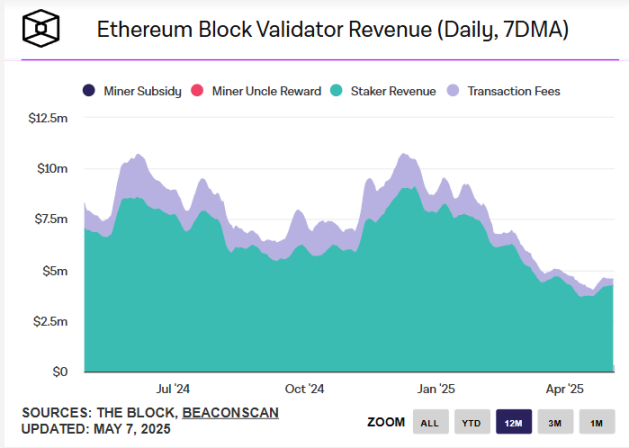
After the Pectra upgrade, Ethereum is currently priced at $1,912.29, with a daily increase of 4.38%. For users, the Pectra upgrade is not only a restart of Ethereum's price but also paves the way for future Ethereum ecosystem development. In recent articles, Vitalik hopes that in five years, Ethereum becomes as simple as Bitcoin, including simplifying the consensus layer, simplifying the execution layer, backward-compatible strategies for VM transition, and simplification through shared protocol components. We also hope that the Ethereum ecosystem can continue to thrive like Bitcoin.







